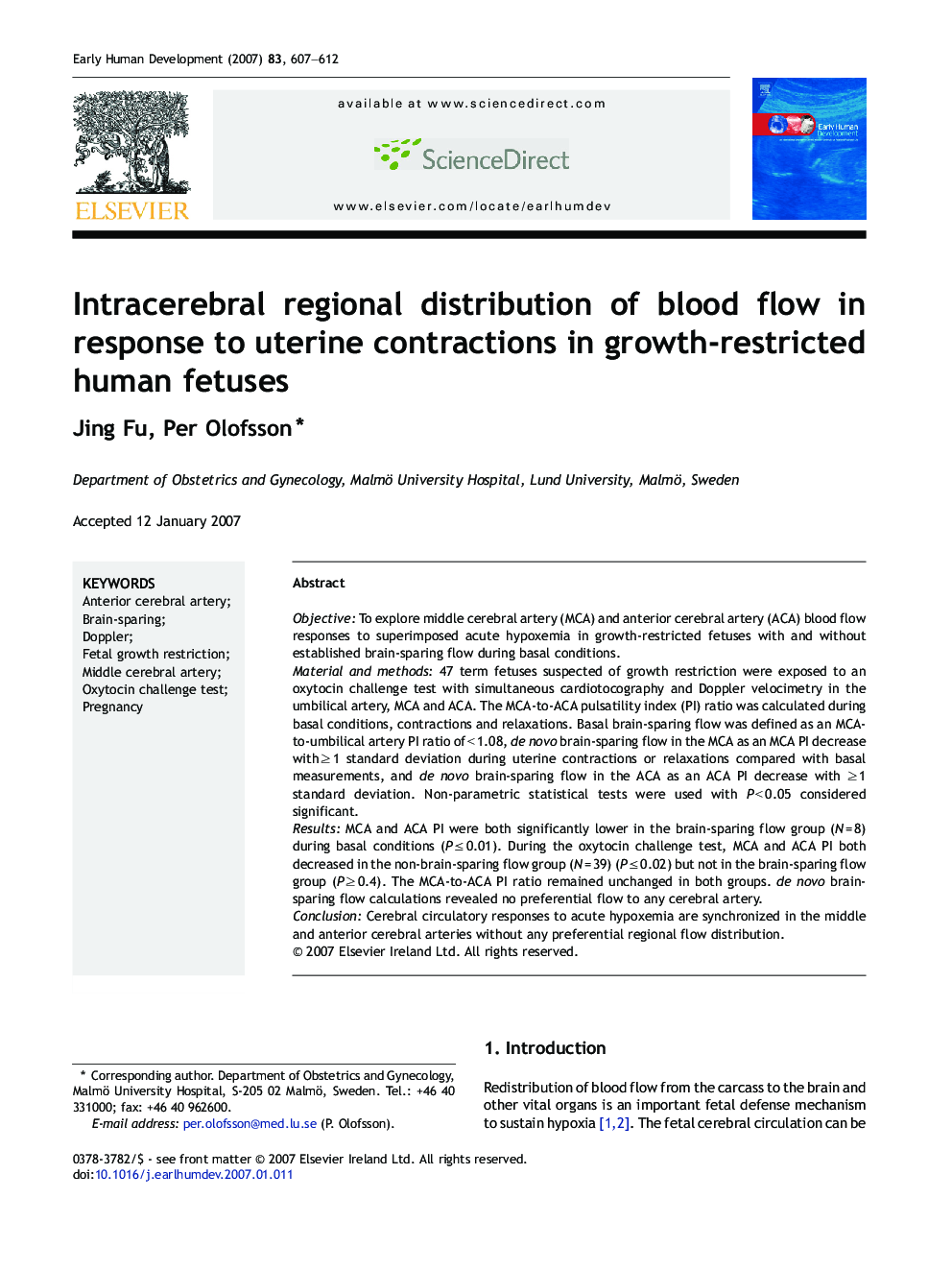| Article ID | Journal | Published Year | Pages | File Type |
|---|---|---|---|---|
| 3918603 | Early Human Development | 2007 | 6 Pages |
ObjectiveTo explore middle cerebral artery (MCA) and anterior cerebral artery (ACA) blood flow responses to superimposed acute hypoxemia in growth-restricted fetuses with and without established brain-sparing flow during basal conditions.Material and methods47 term fetuses suspected of growth restriction were exposed to an oxytocin challenge test with simultaneous cardiotocography and Doppler velocimetry in the umbilical artery, MCA and ACA. The MCA-to-ACA pulsatility index (PI) ratio was calculated during basal conditions, contractions and relaxations. Basal brain-sparing flow was defined as an MCA-to-umbilical artery PI ratio of < 1.08, de novo brain-sparing flow in the MCA as an MCA PI decrease with ≥ 1 standard deviation during uterine contractions or relaxations compared with basal measurements, and de novo brain-sparing flow in the ACA as an ACA PI decrease with ≥ 1 standard deviation. Non-parametric statistical tests were used with P < 0.05 considered significant.ResultsMCA and ACA PI were both significantly lower in the brain-sparing flow group (N = 8) during basal conditions (P ≤ 0.01). During the oxytocin challenge test, MCA and ACA PI both decreased in the non-brain-sparing flow group (N = 39) (P ≤ 0.02) but not in the brain-sparing flow group (P ≥ 0.4). The MCA-to-ACA PI ratio remained unchanged in both groups. de novo brain-sparing flow calculations revealed no preferential flow to any cerebral artery.ConclusionCerebral circulatory responses to acute hypoxemia are synchronized in the middle and anterior cerebral arteries without any preferential regional flow distribution.
